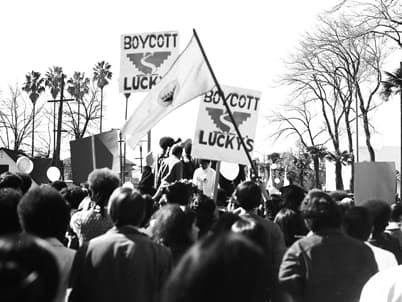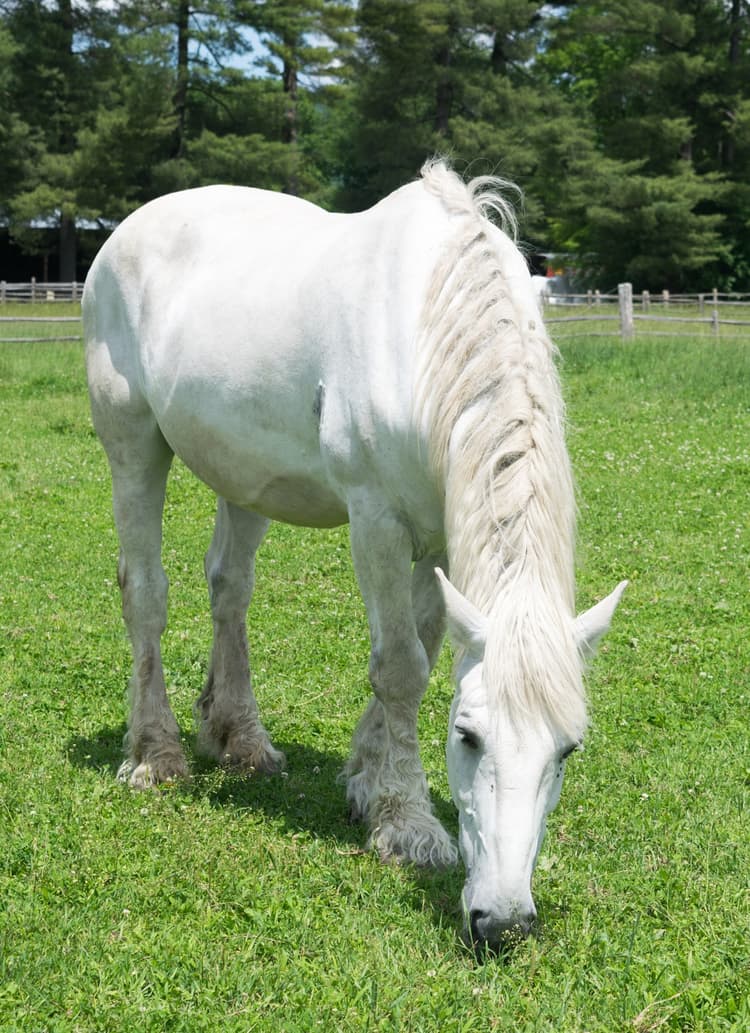“Mi caballo mago” – Sabine Ulibarrí
Elijah Ramirez
8 min read
Study Guide Overview
This AP Spanish Literature study guide covers Sabine Ulibarrí's "Mi caballo mago," exploring its context, characters, literary devices, themes, and significance. Key topics include Ulibarrí's background and the Chicano movement, protagonist analysis, symbolism of the caballo brujo, literary devices (hyperbole, metaphor, simile), themes (freedom, identity, human-nature interaction), and magical realism. The guide provides practice questions and exam tips focusing on character analysis, literary devices, and thematic understanding.
#AP Spanish Literature: "Mi caballo mago" Study Guide 🐎
Welcome! This guide is designed to help you ace your AP Spanish Literature exam, focusing on Sabine Ulibarrí's "Mi caballo mago." Let's dive in!
#📚 Context Behind "Mi caballo mago"
#Author Background
Sabine Ulibarrí (1919-2003) was a key figure in Chicano literature. He explored the Chicano experience, focusing on cultural heritage and identity. His bilingual upbringing in New Mexico deeply influenced his work. 👥
Ulibarrí's work is crucial for understanding the Chicano literary movement. His stories often blend personal experience with cultural themes.
#Historical Context
The 1970s and 80s were pivotal for the Chicano civil rights movement, which sought to address social, political, and economic inequalities. This movement aimed to reclaim Mexican-American heritage and identity. ✊
Understanding the historical context helps in analyzing the themes of identity and cultural pride in Ulibarrí's work.

#🐎 Need to Know About "Mi caballo mago"
#Characters
- The Protagonist: A fifteen-year-old boy, driven by ambition, who seeks to capture the mythical caballo brujo. His journey reflects themes of freedom and the human spirit.
- El caballo brujo: A legendary white horse, symbolizing freedom and untamed spirit. It evokes awe and admiration, remaining an enigmatic figure. 🐎
- The Townspeople: A community that shares stories about the caballo brujo, embodying a collective fascination and shared cultural heritage. They represent the power of stories in shaping identity.
#Literary Devices
- Description/Descripción: Ulibarrí uses vivid language to create rich imagery, such as lush summer forests and green valleys. 🌲🌳
Descriptions in the text often highlight the beauty and untamed nature of the setting, reflecting the horse's spirit.
- Environment/Ambiente: The rural landscapes of the American Southwest create a sense of natural beauty and open spaces. The town's communal atmosphere is warm and inviting.
- Atmosphere/Atmósfera: The story evokes enchantment, wonder, and nostalgia. The horse's elusive nature creates a sense of otherworldliness.
- Hyperbole/Hipérbole: Exaggerations, like calling the horse "mito del reino animal", emphasize its legendary status. The horse being "mas hombre que él" highlights its exceptional qualities.
Think of hyperbole as "hype-erbole" – it's all about exaggerating to make something sound more impressive!
- Epithet/Epíteto: Phrases like "arrogante majestad de los campos" characterize the horse's dominance and pride.

- Asyndeton/Asíndeton: The omission of conjunctions, like in "unas verdad, otras invención", creates a sense of urgency and momentum.
Remember asyndeton as "a-sin-conjunctions" – it's when you leave out the "and"s and "but"s.
- Enumeration/Enumeración: Lists like "tantas trampas, tantas redes, tantas expediciones" emphasize the relentless efforts to capture the horse.
- Chromaticism/Cromatismo: The color white, associated with el caballo brujo, symbolizes purity, freedom, and ethereality.
- Metaphor/Metáfora: The horse is metaphorically compared to "la ilusion, la libertad y la emocion," embodying these qualities.
- Simile/Símil: The simile "Blanco como el olvido" connects the horse's whiteness to the elusive nature of lost memories.
#📝 Summary of "Mi caballo mago"
The story follows a young boy's obsession with capturing the legendary caballo brujo. After a surreal encounter, he manages to capture the horse but realizes its untamed nature. He releases it, understanding that true freedom cannot be contained. The horse becomes a symbol of transcendence. 💖

#🎭 Themes in "Mi caballo mago"
#Las relaciones interpersonales
The protagonist's emotional connection with the caballo brujo is central. The community's shared stories about the horse foster a sense of camaraderie and cultural heritage.
Don't forget to analyze how the community's shared stories contribute to the horse's mythical status and the protagonist's obsession.
#El amor y el desprecio
The protagonist's love for the horse stems from admiration. The horse's resistance to capture highlights the tension between human control and nature's freedom. Some characters feel contempt due to the horse's refusal to be tamed. 😤
#La construcción de la realidad
The lines between myth and reality blur. The horse's mythical status is constructed through the stories and beliefs of the townspeople.
#La trayectoria y la transformación
The protagonist's journey involves a transformation from an obsessive desire to capture the horse to an understanding of its need for freedom. The horse also transforms from an elusive legend to a symbol of untamed spirit.
Pay close attention to how the protagonist's perception of the horse changes throughout the story. This is a key element in understanding the themes of transformation and freedom.
#La naturaleza y el ambiente
The story vividly portrays the changing seasons and their impact on the environment. The horse embodies nature's indomitable spirit, defying human control.

#✨ Significance of "Mi caballo mago"
"Mi caballo mago" is a significant work in Latin American literature, particularly for its magical realism. It explores universal themes like identity, freedom, and human-nature interactions. The story also highlights the importance of folklore and cultural storytelling. 💡
#🎯 Final Exam Focus
- High-Priority Topics:
- Character analysis (especially the protagonist and the caballo brujo)
- Literary devices (description, hyperbole, metaphor, simile)
- Themes (freedom, identity, human-nature interaction)
- Common Question Types:
- Multiple-choice questions on literary devices and character motivations
- Short answer questions on themes and cultural significance
- Free-response questions analyzing the protagonist's transformation and the symbolism of the horse
- Last-Minute Tips:
- Time Management: Quickly identify the main idea of each question and plan your response.
- Common Pitfalls: Avoid summarizing the plot; focus on analysis and interpretation.
- Strategies: Use specific examples from the text to support your claims.
#📝 Practice Questions
Practice Question
Multiple Choice Questions:
-
What does the caballo brujo primarily symbolize in the story? a) Wealth and power b) Freedom and untamed spirit c) The protagonist's childhood d) The struggles of the townspeople
-
Which literary device is most evident in the description of the horse as "arrogante majestad de los campos"? a) Simile b) Metaphor c) Epithet d) Hyperbole
-
What is the main conflict in the story? a) The protagonist's struggle with poverty b) The town's conflict with a neighboring community c) The protagonist's desire to capture the caballo brujo d) The protagonist's internal conflict about his future
Free Response Question (FRQ):
Analyze how the protagonist's perception of the caballo brujo changes throughout the story. In your response, discuss the literary devices that Ulibarrí uses to convey this transformation and how it contributes to the overall themes of the story. (15 points)
Point-by-Point Scoring Breakdown:
- Thesis (2 points): A clear statement that identifies the protagonist's changing perception of the horse and its connection to the story's themes.
- Analysis of Initial Perception (3 points): Discussion of the protagonist's initial fascination and obsession with capturing the horse, supported by textual evidence.
- Analysis of Transformation (4 points): Explanation of the protagonist's realization of the horse's untamed spirit and his decision to release it, supported by textual evidence.
- Literary Devices (4 points): Identification and analysis of at least two literary devices (e.g., hyperbole, metaphor, simile) that Ulibarrí uses to convey the protagonist's changing perception.
- Connection to Themes (2 points): Discussion of how the protagonist's transformation contributes to the broader themes of freedom, human-nature interaction, and the power of imagination.
Good luck! You've got this! 💪
Continue your learning journey

How are we doing?
Give us your feedback and let us know how we can improve





